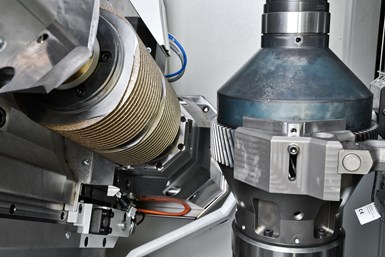Gear Solutions For E-mobility
A demand from industries for high-quality tooth flank surfaces has brought on its heels a need for durable gear components to withstand stress from higher engine rpm. Liebherr is attempting to address this need by using experience with the production processes and technologies to find solutions to these issues.
Share




Autodesk, Inc.
Featured Content
View More.png;maxWidth=45)
DMG MORI - Cincinnati
Featured Content
View More

ECi Software Solutions, Inc.
Featured Content
View More


New drive technologies in e-mobility are changing the requirements for gears. By proxy, the quality of the tooth flank surfaces also change. Liebherr Gear and Automation Technologies Inc. understands the relief which comes from having a reliable technology partner with knowledge covering an entire range of production processes and technologies. For this reason, Liebherr aims to fit this role in its partnerships— an enabler finding suitable solutions for companies it partners with.
One of the most important topics is the reduction of noise emissions from the drivetrain while driving. In order to minimize installation space, many parts of the gearbox are manufactured using a lightweight or compact design. At the same time, gear components must be increasingly durable in order to withstand the considerable stress caused by the higher engine rpm.
This need for sturdy gear components results in a demand for high-quality tooth flank surfaces. As a result of this call, there is a growing demand on the gear cutting process. Liebherr addresses this issue, refining and optimizing various technological solutions for e-gearboxes. Liebherr applies its expertise both in the process depth and in the range of technologies in order to advise and assist customers comprehensively.
On the process side, grinding with dressing-free CBN grinding worms promotes a high degree of process reliability, according to Liebherr. During the hard gear finishing, the gears can be precision-ground and polished. The surface roughness improves as a result.
Methods for tooth lead modification are available for the tooth flank topology. For example, topologically error-free grinding with targeted end relief (GER) optimizes the load-bearing capacity. In order to reduce noise emissions, a targeted waviness can be applied to the tooth flank — also known as noise excitation optimization. In addition, the diagonal amount during finishing can be increased in order to distribute the ghost line structure randomly— also known as silent shift grinding.



.png;maxWidth=150)


























.png;maxWidth=300;quality=90)






